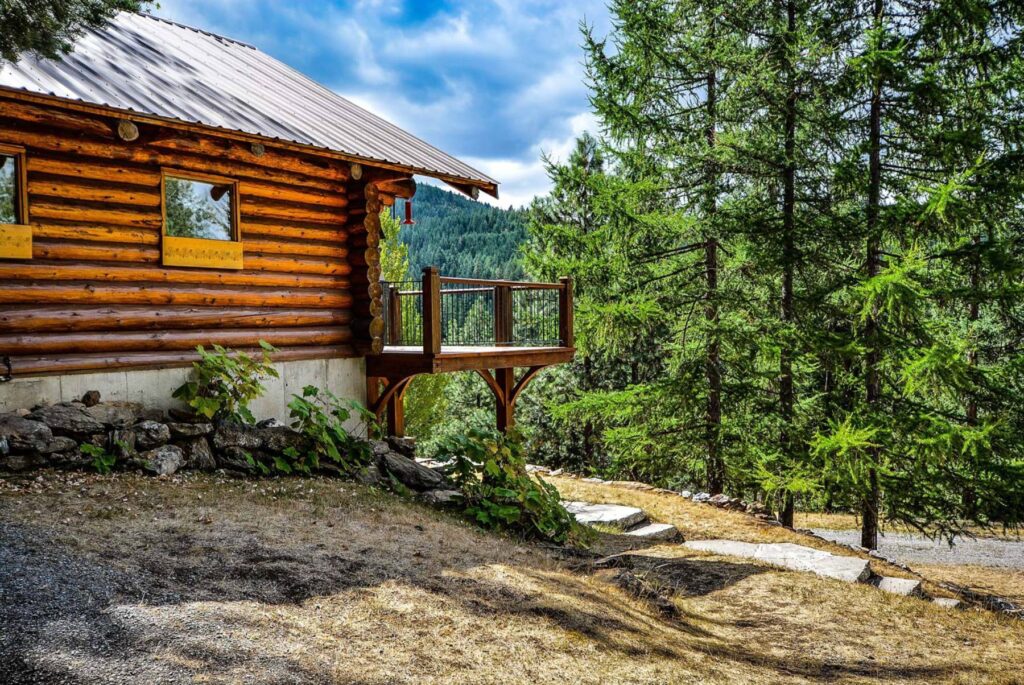Buying a log home is a dream for many, offering a rustic charm and a connection to nature that’s hard to beat. However, owning a log home comes with unique responsibilities compared to traditional homes. As a home inspector, I often see first-time buyers overwhelmed by the upkeep required to preserve these stunning structures. If you’re considering purchasing your first log home, here’s what you need to know about maintaining it.
Why Maintenance Is Different for Log Homes
Log homes are built with natural materials, which makes them susceptible to unique issues like moisture, pests, and UV damage. A proactive approach to maintenance can extend the lifespan of your home while keeping it structurally sound and visually stunning.
10 Must-Know Maintenance Practices for Log Homes
1. Conduct Regular Inspections
Log homes require a close eye on their condition. Twice a year, inspect the exterior for:
- Cracks or Splits: Look for areas where water could collect and cause rot.
- Rot or Insect Damage: Carpenter ants, termites, and wood-boring beetles are common culprits.
- Gaps in Sealing: Pay special attention to areas around windows, doors, and corners.
2. Wash the Exterior Annually
Dirt, pollen, mold, and mildew can break down wood over time. Clean the logs annually with:
- A mild wood cleaner and a low-pressure washer.
- Avoid harsh chemicals or high-pressure washing, which can damage the wood.
3. Reapply Stain or Sealant
Protect your logs with stain or sealant every 3–5 years. Choose products designed for log homes with:
- UV Protection: Shields against sun damage.
- Breathability: Allows moisture to escape while repelling water.
4. Manage Cracks (Checks)
Wood naturally cracks as it dries. While small cracks are fine, upward-facing cracks should be filled with:
- A flexible caulk or wood filler to prevent water infiltration.
5. Monitor Caulking and Chinking
If your log home has chinking (the material between the logs), inspect it annually for gaps or deterioration. Reapply as needed to maintain an airtight and weatherproof seal.
6. Control Moisture Levels
Moisture is one of the biggest enemies of a log home. Protect against it by:
- Keeping logs at least 18 inches off the ground.
- Ensuring proper drainage and grading around the home.
- Installing wide roof overhangs to reduce rain and snow exposure.
7. Prevent Pests
Log homes are especially inviting to pests. Protect your home by:
- Treating logs with borate-based wood preservatives to deter insects.
- Keeping vegetation, mulch, and firewood at least 3 feet from the foundation.
8. Maintain Gutters and Roofs
- Clean gutters and downspouts regularly to prevent overflow onto logs.
- Check for roof leaks that could cause water damage to the logs.
9. Take Care of Interior Logs
Dust and clean interior logs with a wood-safe cleaner. Monitor for interior cracks or shrinkage, which can occur during seasonal changes.
10. Prepare for Seasonal Weather
- In winter, remove heavy snow from overhangs to prevent water pooling when it melts.
- In humid climates, ensure proper ventilation to avoid excess moisture buildup inside the home.
Conclusion
Owning a log home is incredibly rewarding, but it requires a hands-on approach to maintenance. By following these tips, you can preserve the beauty and functionality of your log home for decades to come. As a home inspector, I’ve seen firsthand the difference that consistent upkeep makes, and I’m here to help you navigate your first log home purchase with confidence.
If you’d like to schedule an inspection or talk more about log home maintenance, feel free to reach out—I’d love to help!

